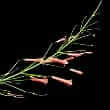Background
- Quassia, a tree native to Jamaica and its neighboring islands, has traditionally been used as a remedy for roundworms, as an insecticide, and in brewing as a substitute for hops. It has also been used as a bitter digestive aid and a remedy for digestive disorders, parasites, and head lice.
- Several early studies performed on quassia verified its traditional use as a natural insecticide, documenting it as an effective treatment for head lice in humans. Since quassia has long been used for malaria in South America, researchers studied this biological effect as well. One study showed strong antimalarial activity in mice.
- There is early evidence that quassia may be useful in the treatment of leukemia or gastric ulcers. Quassia may also have pain-relieving, muscle relaxing, and sedating effects, but human clinical trials are currently lacking.
References
- Ajaiyeoba EO, Krebs HC. Antibacterial and antifungal activities of Quassia undulata and Quassia amara extracts in vitro. Afr.J Med Med Sci 2003;32(4):353-356. . View Abstract
- Ajaiyeoba EO, Abalogu UI, Krebs HC, et al. In vivo antimalarial activities of Quassia amara and Quassia undulata plant extracts in mice. J Ethnopharmacol. 11-30-1999;67(3):321-325. . View Abstract
- Apers S, Cimanga K, Vanden Berghe D, et al. Antiviral activity of simalikalactone D, a quassinoid from Quassia africana. Planta Med 2002;68(1):20-24. . View Abstract
- Bertani S, Bourdy G, Landau I, et al. Evaluation of French Guiana traditional antimalarial remedies. J Ethnopharmacol 4-8-2005;98(1-2):45-54. . View Abstract
- Cabral JA, McChesney JD, Milhous WK. A new antimalarial quassinoid from Simaba guianensis. J Nat Prod. 1993;56(11):1954-1961. . View Abstract
- De Cupere F, Vandebroek I, Puentes M, et al. Evaluation of vegetal extracts as biological herbi- and pesticides for their use in Cuban agriculture. Meded.Rijksuniv.Gent Fak.Landbouwkd.Toegep.Biol Wet. 2001;66(2a):455-462. . View Abstract
- Heck AM, DeWitt BA, Lukes AL. Potential interactions between alternative therapies and warfarin. Am J Health Syst.Pharm 7-1-2000;57(13):1221-1227. . View Abstract
- Kitagawa I, Mahmud T, Yokota K, et al. Indonesian medicinal plants. XVII. Characterization of quassinoids from the stems of Quassia indica. Chem.Pharm.Bull.(Tokyo) 1996;44(11):2009-2014. . View Abstract
- Njar VC, Alao TO, Okogun JI, et al. Antifertility activity of Quassia amara: quassin inhibits the steroidogenesis in rat Leydig cells in vitro. Planta Med 1995;61(2):180-182. . View Abstract
- Parveen S, Das S, Kundra CP, et al. A comprehensive evaluation of the reproductive toxicity of Quassia amara in male rats. Reprod.Toxicol. 2003;17(1):45-50. . View Abstract
- Raji Y, Bolarinwa AF. Antifertility activity of Quassia amara in male rats - in vivo study. Life Sci 1997;61(11):1067-1074. . View Abstract
- Sugimoto N, Sato K, Yamazaki T, et al. [Analysis of constituents in Jamaica quassia extract, a natural bittering agent]. Shokuhin Eiseigaku Zasshi 2003;44(6):328-331. . View Abstract
- Toma W, Gracioso JS, Hiruma-Lima CA, et al. Evaluation of the analgesic and antiedematogenic activities of Quassia amara bark extract. J Ethnopharmacol. 2003;85(1):19-23. . View Abstract
- Toma W, Gracioso Jde S, de Andrade FD, et al. Antiulcerogenic activity of four extracts obtained from the bark wood of Quassia amara L. (Simaroubaceae). Biol Pharm.Bull. 2002;25(9):1151-1155. . View Abstract
- Vigneron M, Deparis X, Deharo E, et al. Antimalarial remedies in French Guiana: a knowledge attitudes and practices study. J Ethnopharmacol 4-26-2005;98(3):351-360. . View Abstract







